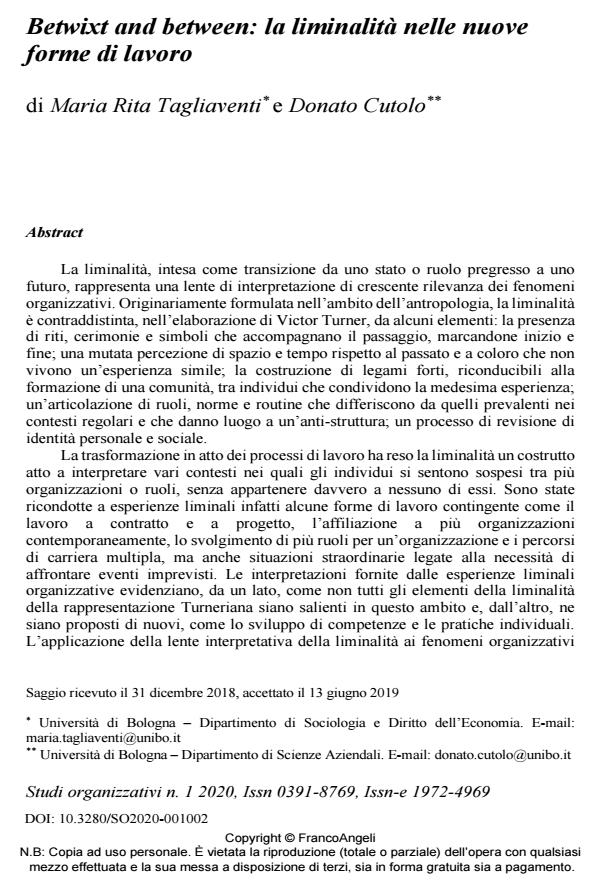Betwixt and between: Liminality in new forms of employment
Journal title STUDI ORGANIZZATIVI
Author/s Maria Rita Tagliaventi, Donato Cutolo
Publishing Year 2020 Issue 2020/1
Language Italian Pages 29 P. 38-66 File size 403 KB
DOI 10.3280/SO2020-001002
DOI is like a bar code for intellectual property: to have more infomation
click here
Below, you can see the article first page
If you want to buy this article in PDF format, you can do it, following the instructions to buy download credits

FrancoAngeli is member of Publishers International Linking Association, Inc (PILA), a not-for-profit association which run the CrossRef service enabling links to and from online scholarly content.
Emergent work processes have prompted a growing interest for liminality in organization studies. Liminality was originally conceived of in anthropology to express the transition from a previous state or role to a future one. In the organizational realm, contingent work, work at the boundaries across different organizations, assumption of more roles within an organization, multiple careers pathways, and the handling of unexpected events have been interpreted as liminal experiences and comprehended through this lens, which this paper intends to analyze. We first delve into the core elements of a liminal experience according to Victor Turner’s view, i.e., rites, ceremonies, and symbols signaling the beginning, unfolding, and end of the passage; different perceptions of space and time; the communitas that develops between individuals sharing the same transition; the construction of an anti-structure whose rules and routines differ from those pertaining to established structures; engagement in identity work to modify, revise, and form personal and social identities. Based on Turner’s elaboration, accounts of liminal experiences in organizational settings are examined to highlight similarities and differences. Finally, the need to bring to convergence the original elaboration of liminality with the potential for its enrichment offered by the interpretation of organizational phenomena is discussed.
Keywords: Liminality, work processes, identity work, temporary work, consultancy, learning, practice.
- Posizionamenti liminali tra autonomia e dipendenza. Il caso del settore bancario e assicurativo Andrea Bottalico, Annalisa Murgia, in STUDI ORGANIZZATIVI 2/2023 pp.35
DOI: 10.3280/SO2022-002002
Maria Rita Tagliaventi, Donato Cutolo, Betwixt and between: la liminalità nelle nuove forme di lavoro in "STUDI ORGANIZZATIVI " 1/2020, pp 38-66, DOI: 10.3280/SO2020-001002